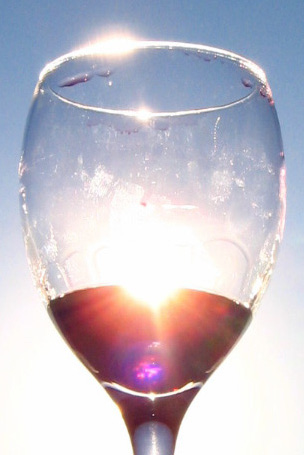
After a festive New Year's celebration in the western bar district on Hong Kong island, me and the two Jens decided to take advantage of this extended vacation of ours and explore more of Asia. Last Wednesday we left Shenzhen, the city people call China's history book of the past 20 years and headed north, to the city deemed to chart over 5000 years of China's past: Xi'an.
Xi'an is the capital of Shaanxi Province, but during its heyday it served as the imperial capital for 13 dynasties, beginning with the Zhou Dynasty (11th century - 770 BCE). It was the beginning of the silk road (or the end, depending on where you're coming from, I suppose) and the silk trade made it the richest city in China. Today it is one of the most popular tourist destinations in China, attracting tens of thousands of tourists each year.
Fortunately we came during the low season, so although it was cold, it was easy-going and much cheaper. We spent 5 days, sleeping in a fun - although not exactly cozy! - hostel huddled next to the Muslim Quarter, one of those wonderful neighbourhoods that you can wander for hours, finding something interesting to eat, photograph or bargain for around every corner.
And yes, we saw the famous Terracotta Warriors along with some pagodas, the old city walls, the Shaanxi History Museum, a dinner-and-dumpling show and the stunning Hua Shan (Flower Mountain). I will be posting pictures and anecdotes about each of these places in the days to come. For now I need to get some sleep so I can gear up for our next big adventure in a few days: Southeast Asia!!

The DaYanTa (Big Goose Pagoda), constructed in 653 CE for the storage of translations of Buddhist sutras from India. It measures around 64 m in height.

The XiaoYanTa (Small Goose Pagoda), built in 707 CE. It measures around 43 m in height, but was originally 45 m until an earthquake reduced its size.

OK so you can't exactly read the red sign on the building, but it reads about 3 degrees Celsius. A bit of a shock to the system after living in balmy Shenzhen for a few months, but at the same time so refreshing and invigorating. I hear that Toronto has yet to get this cold. . .

Jen and I in front of the Drum Tower, near the Muslim Quarter.

Figures in a graveyard at the XiaoYanTa

Monkey gravestone

I haven't figured this one out yet. Perhaps a lion?

The imposing Bell Tower that still chimes - built in 1582 and restored in 1739.

The city walls at the train station. The first walls were constructed from 194-190 BCE during the Han Dynasty. They measured around 25.7 km in length. In 1370, the Ming Dynasty emperors built a new, smaller wall, 11.9 km in length - the wall one sees today in Xi'an.
 One of my favourite parts of climbing Hua Shan was examining the thousands of padlocks along the way. These are clasped here by couples - the belief is that if you and your lover engrave your names on a padlock and place it along the mountain trails, you will stay together forever. You can see them everywhere along the trail, but the greatest number of them can be found at the Golden Lock Pass.
One of my favourite parts of climbing Hua Shan was examining the thousands of padlocks along the way. These are clasped here by couples - the belief is that if you and your lover engrave your names on a padlock and place it along the mountain trails, you will stay together forever. You can see them everywhere along the trail, but the greatest number of them can be found at the Golden Lock Pass. The Padlocks hang from the chains lining the trails
The Padlocks hang from the chains lining the trails







































